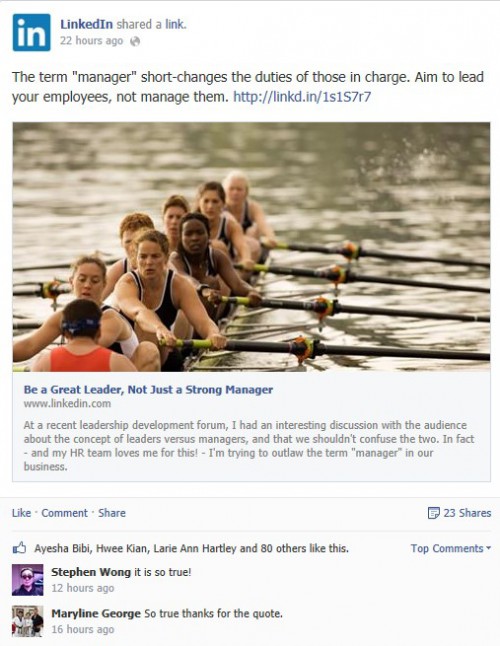- for Associations
- >
- Resources
- >
- B2B Lead-Generation: It’s All About Building Trust Through Content
B2B Lead-Generation: It’s All About Building Trust Through Content
What do many leading B2B companies, like LinkedIn, Pfizer and Northwestern Mutual have in common? They reinforce lead-generation efforts through relevant, trust-building content. Here are some ideas on how your company can do the same.
Content marketing is important for lead generation in the B2B community.
A survey cited by eMarketer reveals that content marketing is one of the top three lead generation tactics used by B2B marketing professionals.
Content marketing is geared towards helping businesses pinpoint their specific audience with a perfect combination of psychographic/demographic messaging. Well-placed and formed content focuses on building the brand’s identity, promise and trust – thus making the infamous cold-call, warmer.
It’s all about building TRUST
Prospective business clients are especially in need of it. Given their purchase decisions bear the weight of their work reputation and employment, they need more reassurance that they are making the right choice. B2B brands have less of an emotional draw or identity to consumers. This is detrimental to reinforcing consumer decisions.
If B2B marketers want more purchase-inclined leads, they need to make stronger connections with their audience by presenting themselves in a context, identity and role that builds trust. The aforementioned eMarketer studies point to the fact that it is not just about generating leads, but saying and conveying what is appropriate for bringing your target audience to the door.
Salesforce.com teamed with Kapost to highlight the types of identities a company could assume in their content to shrink the trust-gap between sales reps and their prospects. In addition, these ideas are useful for helping reps build their call personas and stay abreast of prospect industry information.
1. Be a teacher - create content that educates your audiences as well as your sales force. Form a persona that educates prospects about not just goods and services, but industry best practices.
As part of the company’s communication strategy, it could share relevant educational resources, articles and tools. Dig deep into blogs, forums and any resource necessary to understand what the prospect’s pressure points may be. Create content and sales conversations that address these issues.
Consider teaching audiences about new business processes and tools. Many associations and small-medium sized businesses may feel less competent in one area than another. What processes does your company execute well that it can share?
LinkedIn, a leading sales organization, features great examples of this content strategy on their Facebook page by delivering content that teaches how to improve management techniques and eliminate work-day stress concerns.


2. Inspiration-Leader – encourage positivity and motivate prospects.
Tailor a conversation to having prospects acknowledge their own strengths, weaknesses and resources. Encourage them to overcome through the solutions your companies can achieve when working together.
HCL Technologies, a global IT company based in Florida, has great examples on its webpage through posting inspirational images and quotes.

3. Thought leader – develop a reputation as an industry expert with content articles.
Have articles published and redistributed by widely regarded, authoritative sources. This requires producing higher standards of editorial content that meet a more professional, research-rich tone. As a rep, position as the knowledge expert and reinforce this persona by being exceedingly well-informed with content from credible sources.
Pfizer highlights this approach by shining spotlights on its head scientists and their advancements. Companies can promote their expertise with interviews, informational videos on company research and published articles all authored by leaders within the company.


Success Stories
View testimonials from other associations that share their MultiView success story
National Sherriff's Association
Vintage Racing League
IAEE



